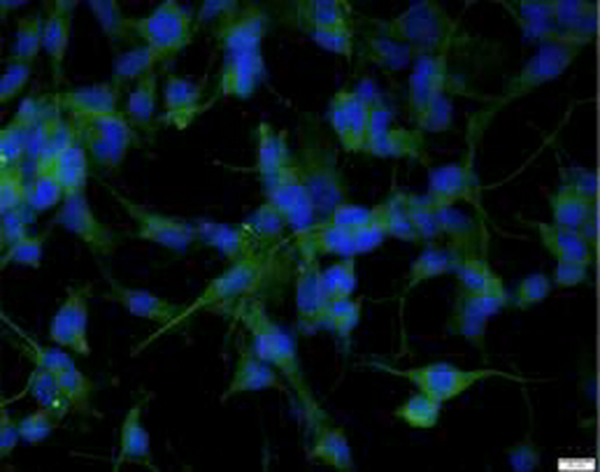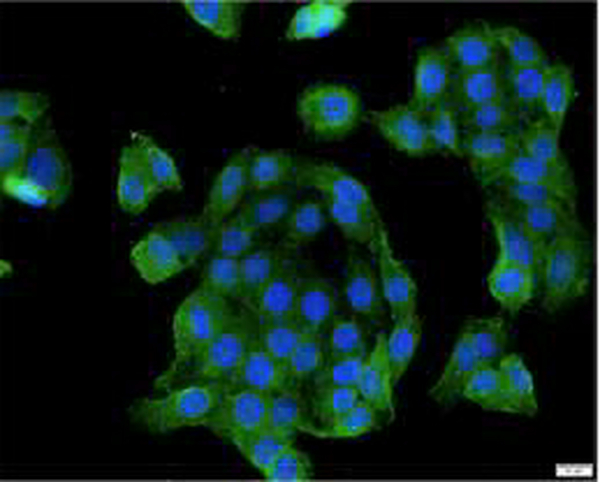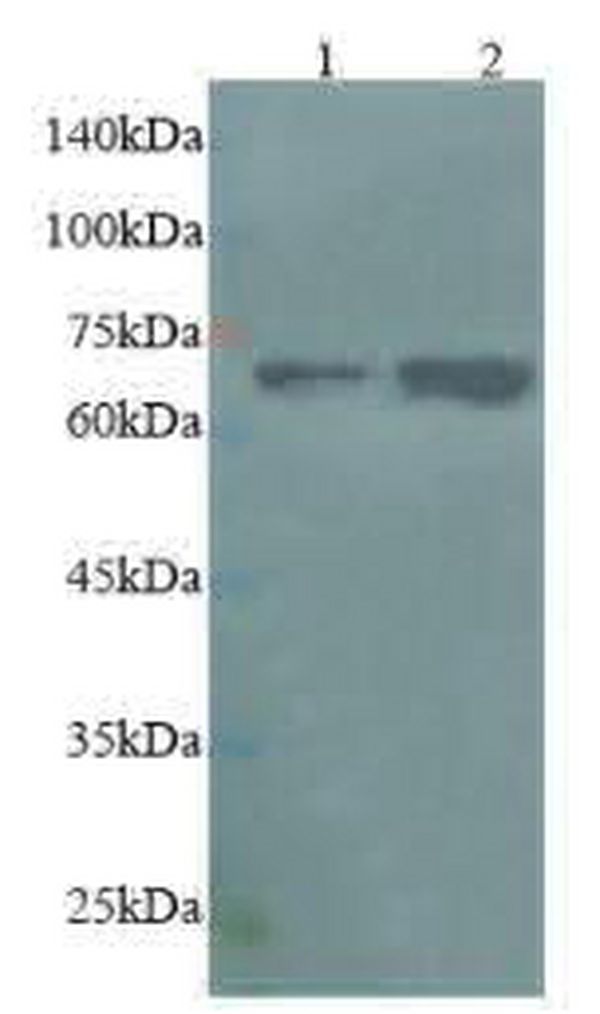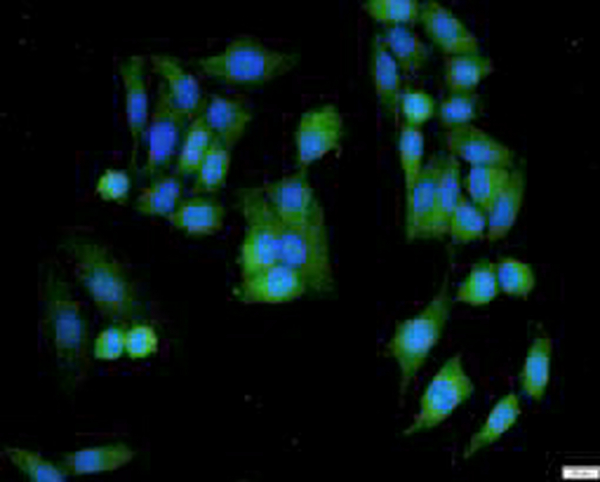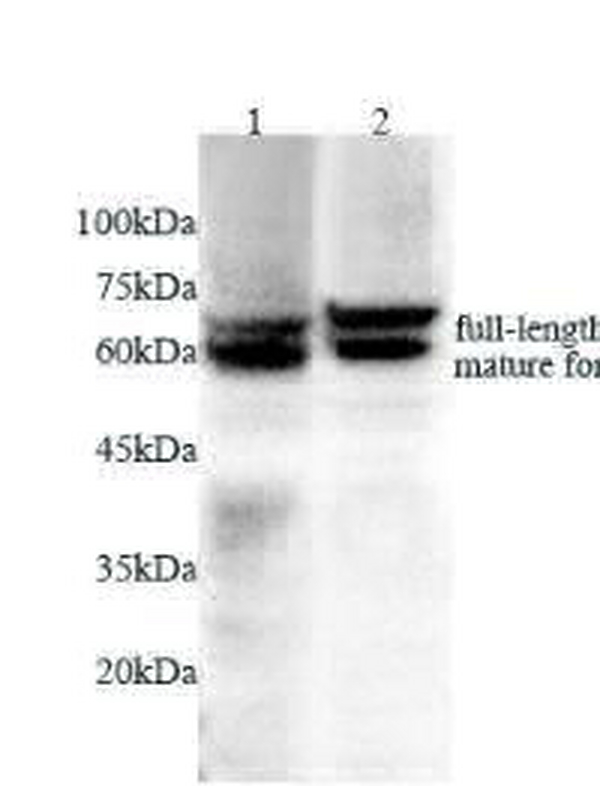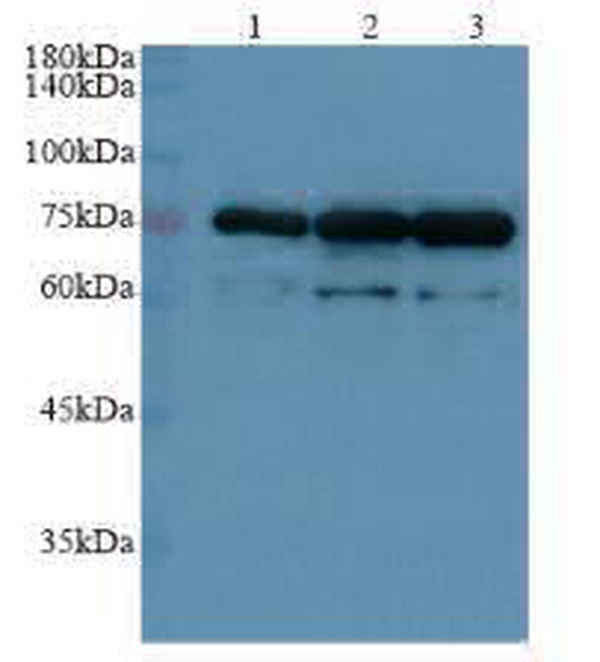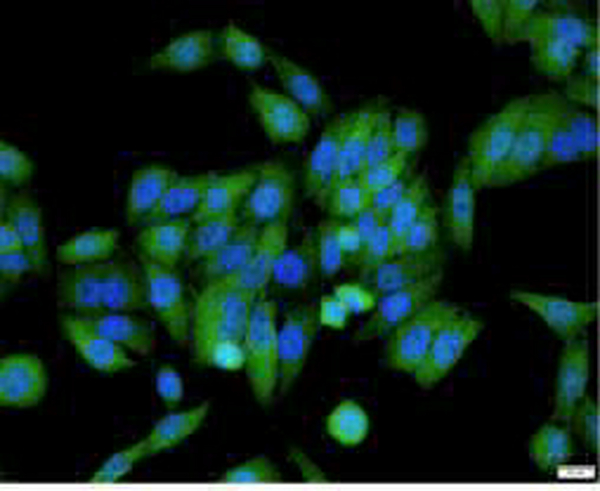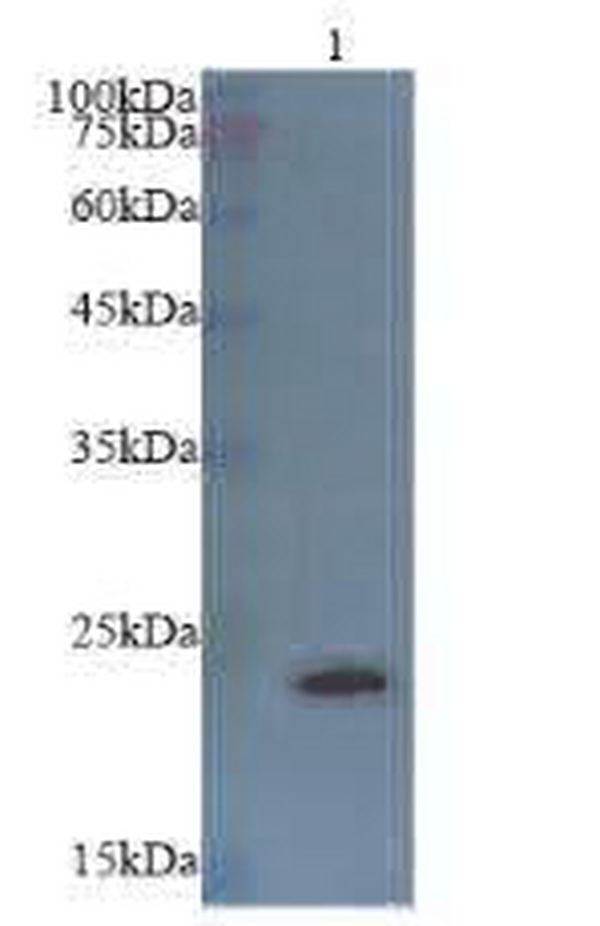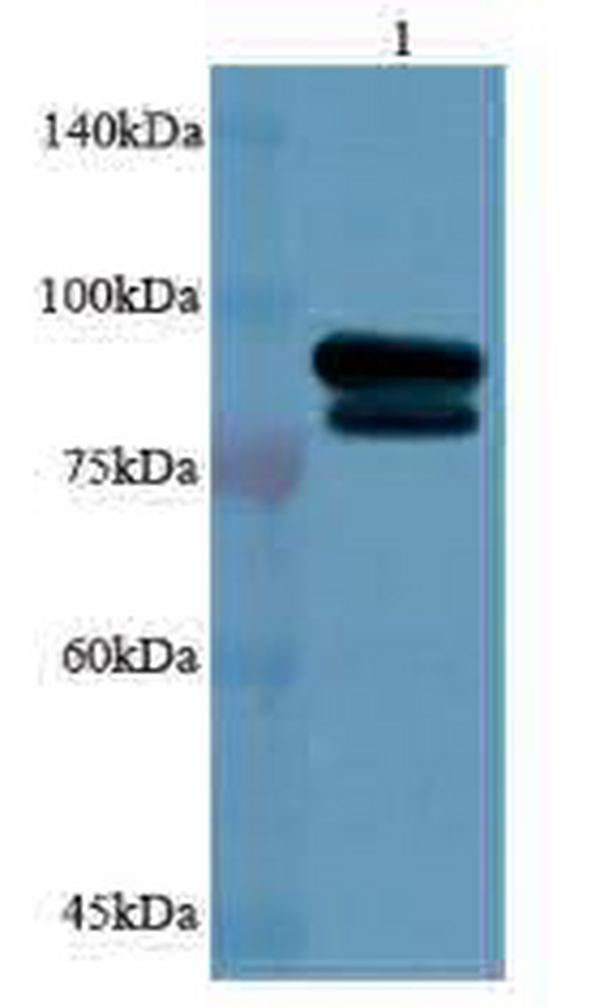QQ:3002763590


客服电话:021-61998208
Anti AIF1/IBA1 polyclonal antibody
AIF1/IBA1抗体
Anti AIF1/IBA1 polyclonal antibodyAIF1, also named as G1, IBA1 or daintain/AIF-1, is a 143 amino acid cytoplasmic, inflammation response scaffold protein. It is constitutively expressed in monocytes and macrophages and is known to be involved in macrophage activation. It is a marker of activated macrophage. Despite a lack of detailed knowledge on the in vivo physiological functions of AIF-1, there is growing evidence that shows its aberrant expression contributes to the pathogenesis of many autoimmune diseases, including rheumatoid arthritis. (20944424). AIF1 is an actin-binding protein that enhances membrane ruffling and RAC activation. It enhances lymphocyte migration and the actin-bundling activity of LCP1. AIF1 plays a role in RAC signaling and in phagocytosis and a role in vascular inflammation. AIF1 promotes the proliferation of vascular smooth muscle cells and of T-lymphocytes. It is also as a microglial cell marker.
Anti ALDH1A1 polyclonal antibody
ALDH1A1抗体
Anti ALDH1A1 polyclonal antibodyALDH1A1(Aldehyde dehydrogenase family 1 member A1), also named as ALDC, ALDH1 and PUMB1, belongs to the aldehyde dehydrogenase family. The ALDH1A1 gene encodes a liver cytosolic isoform of acetaldehyde dehydrogenase, an enzyme involved in the major pathway of alcohol metabolism after alcohol dehydrogenase. ALDH1A1 plays a critical role in protection against oxidative stress-induced cytotoxicity in lens epithelial cells(PMID:19296407). And it is important for multiple biological activities including drug resistance, cell differentiation, and oxidative stress response(PMID:19025616). As a novel cancer stem cell marker, ALDH1A1 can be used for tumors whose corresponding normal tissues express ALDH1 in relatively restricted or limited levels such as breast, lung, ovarian or colon cancer(PMID: 20422001). This antibody can also recognize some other membranes of the aldehyde dehydrogenase family.
Anti ACOX1 polyclonal antibody
ACOX1抗体
Anti ACOX1 polyclonal antibodyACOX1(Peroxisomal acyl-coenzyme A oxidase 1) is the first and rate-limiting enzyme in the peroxisomal fatty acid beta-oxidation pathway and catalyzes the desaturation of acyl-CoAs to 2-trans-enoyl-CoAs. It belongs to the acyl-CoA oxidase family and also named as ACOX, AOX, SCOX. It has 3 isoforms produced by alternative splicing with the molecular mass of 70-74 kDa and can be cleaved post-translationally into a 50-kDa and a 22-kDa subunit between Val468 and Ala469 (PMID: 10672038). Defects in ACOX1 are the cause of adrenoleukodystrophy pseudoneonatal (Pseudo-NALD).
Anti ANG polyclonal antibody
ANG抗体
Anti ANG polyclonal antibodyAngiogenin (ANG), an angiogenic ribonuclease, is a member of the vertebrate-specific, secreted RNASE superfamily. Angiogenin, originally identified as a tumor angiogenic factor, was related with the growth and metastasis of numerous tumors. Angiogenin has been proposed as a permissive factor for angiogenesis induced by other angiogenic factors, including vascular endothelial growth factor (VEGF), basic fibroblast growth factor, acidic fibroblast growth factor, and epidermal growth factor. Angiogenin production and secretion may be stimulated by hypoxia. Increased angiogenin serum levels have been associated with the incidence and severity of several human tumors, including HCC. It is a 17 kDa precursor which is cleaved to generate the 14 kDa mature protein.
Anti AIF polyclonal antibody
AIF抗体
Anti AIF polyclonal antibodyApoptosis-inducing factor (AIF) is one of the mitochondrial proteins to be released into the cytosol during apoptosis, and it is discovered as the first protein that regulates caspase-independent apoptosis(PMID:20494118). AIF is encoded as a 67 kDa protein that contains a mitochondrial localization signal (MLS) in the N-terminus.It is cleaved from the 62 kDa to the 57 kDa form following ischemic injury and translocated from the mitochondria to the nucleus in a calpain-dependent manner(PMID:19332058).
Anti ARNTL polyclonal antibody
ARNTL抗体
Anti ARNTL polyclonal antibodyBMAL1, a basic helix–loop–helices with Per–Arnt–Sim (PAS) domain transcription factor, is one of components that has core clock function in mammals. It form a heterodimer with CLOCK, and induce the transcription of target genes by binding to E-box elements within their promoter regions. And this transcription is inhibited in a feedback loop by PER, and also by CRY proteins.Also BMAL1 is a key player in the regulation of metabolism, playing a role in adipogenesis and in the control of glucose and triglycerides levels.
Anti APOA4 polyclonal antibody
APOA4抗体
Anti APOA4 polyclonal antibodyAPOA4 is a major protein component of chylomicrons in postprandial lymph and plasma. It is synthesized in the small intestine and the liver, attached to chylomicrons by enterocytes, and secreted into intestinal lymph during fat absorption. APOA4 is intimately involved in metabolism and has protective roles in cardiovascular diseases like atherosclerosis. APOA4 can promote insulin secretion and maintain glucose homeostasis. It also has potent antioxidant and anti-inflammatory properties.
Anti BTC polyclonal antibody
BTC抗体
Anti BTC polyclonal antibodyBetacellulin (BTC), a member of the epidermal growth factor (EGF) family, binds and activates ErbB1 and ErbB4 homodimers. BTC is synthesized primarily as a transmembrane precursor, which is then processed to mature molecule by proteolytic events. This protein is a ligand for the EGF receptor. BTC was expressed in tumors and involved in tumor growth progression.
最新动态
-
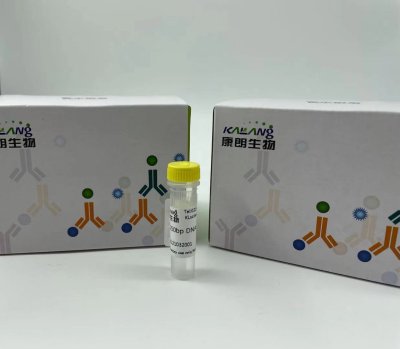
Anti-GNGT1 KL20092-001(50ul)
2021-10-11 -

Anti-GNGT1 antibody(50ul) KL20093-001
2021-10-11 -
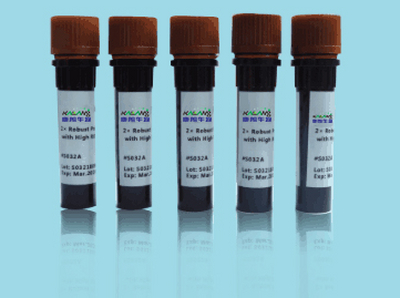
MUC5AC (PT2058) mouse Monoclonal Antibody
2021-01-06 -

mOrange mouse Monoclonal Antibody(Mix)
2021-01-05
热门标签
- Histone H3 rabbit Polyclonal Antibody Histone H3抗体
- EGFR rabbit Polyclonal Antibody EGFR抗体
- Cy3 Conjugated
- AbFluor™ 555 Conjugated
- AbFluor™ 680 Conjugated
- AbFluor™ 350 Conjugated
- AbFluor™ 647 Conjugated
- AbFluor™ 594 Conjugated
- AbFluor™ 405 Conjugated
- Cy5 Conjugated
- AbFluor™ 488 Conjugated
- Cyclophilin B抗体 Cyclophilin B Monoclonal Antibody(2B10)
- COX IV抗体 COX IV Monoclonal Antibody(6C8)
- PCNA抗体 PCNA Monoclonal Antibody(12D10)
- FAK rabbit Polyclonal Antibody FAK抗体
邮箱:3002763590@qq.com
电话:021-61998208

扫码关注微信公众号



